#high street culture
Text

Happy Holiday$. #societythings
#darling#darling bonnie#darling bonnie land#darling society#high class hip hop#high street culture#art#culture#style#cars#zoom#porsche#vintage#christmas#happy holidays#lifestyle#lifestyle blog#music#music blog#chic#glamour#societythings#affiliate links
486 notes
·
View notes
Text
Darling Bonnie’s Memos 📝
Re: Hi, Society!
🔊 Sound on & up!
Feeling like a show off, decided to grace you with a showroom that’s giving High Street Culture versions of a speech made at balls designed for debuts, mostly because tis the season for small offerings designed for the Interlude.
x,
DB
#darling#darling bonnie#darling society#darling bonnie land#high class hip hop#high street culture#art#culture#style#beauty#lifestyle#lifestyle blog#music#music blog#rap#new music#new song#singer songwriter#pop music#societythings#lyrics#lyric quotes#lyric posting#song lyrics
2 notes
·
View notes
Text
fandom politics are so funny
my favorite character is also your favorite character but you cannot interact with me because we wish for loki from the avengers to kiss two separate people. this divide is irreconcilable and i am inherently irredeemable. to suggest bipartisanship would make us both radicals.
#Any and all Sylvie lovers are welcome here!!#idgaf what you ship and if you also love her i will follow you#just interested in appreciating women as a collective#personally i have no malice to other shippers#i think aww good for them :) and go about my way#look at me. i am just a little guy. i hold no ill intent. except for [REDACTED] who knows what she did back in high school.#:3 :3 :3#i'm trying to imagine explaining this to a normal guy off the street and it's making me giggle#juni rambles#loki#loki tv show#loki series#loki show#loki tv#loki s2#pro sylki#sylki#fandom#fan culture#fandom culture
200 notes
·
View notes
Text

✿ Precious Lee for ELLE Magazine (2022) ✿
#precious lee#black culture#black fashion#black tumblr#blackgirl#glamour#black girl moodboard#black beauty#black girl fashion#black girl luxury#high fashion#black supermodels#black girl beauty#black art#black model#black is beautiful#black women#fashion model#runway fashion#fashion#street style#y2kcore#y2k style#street fashion#paymetea#elle magazine#magazine
29 notes
·
View notes
Photo

Source: unknown
Instagram
#loewe#cartier#jeans#baggyjeans#fashion#high fashion#street fashion#womenswear#women's fashion#womenstyle#highend#streetfashion#streetculture#culture#inspiration#aestethic#photography
125 notes
·
View notes
Text

Oldham Street, Manchester.
#Chanel#Chanel Fringe#Chanel Manchester#Chanel Metiers d'Art#T & MC#trumpet#terry trumpet#pissing rain#bee network#high fashion#sick kicks#the great and the good#Manchester#street photography#lens culture#what is the city#'member that?#nightworld#record shop#lighting#ootd#wiwt#cold hands
25 notes
·
View notes
Text
That said it IS really fun to think about how fashion would differ in Kryta compared to how it actually is. With things like class, religion, and immigrant cultures all having clear influences on how people would dress (just like real life!)
#girlbob.txt#gw2#i was specifically thinking about canthan-krytan fashion and how it would change between high class and low class#current idea being that high class follows things like current chinese street fashion trends#while lower class has a counter culture fashion consisting of looser shirts tight belts and asymmetry#not sure tho it was just an idea seeing as i'm not skilled enough to draw what i want#for concept arts
12 notes
·
View notes
Text

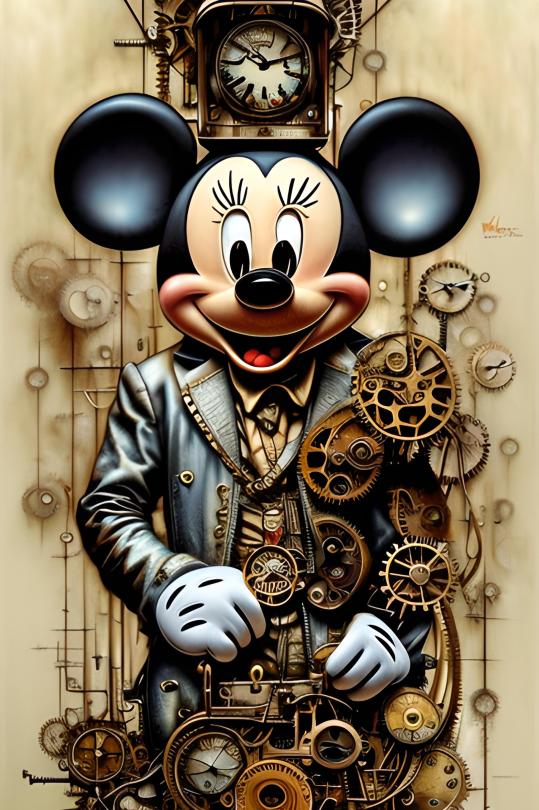



#Streetwear#urban fashion#X2the9 gear#stylish hoodies#cool T-shirts#trendy sweats#casual jackets#urban street style#skate culture#hip-hop fashion#limited edition gear#exclusive X2the9 apparel#graphic tees#designer hoodies#innovative streetwear#underground fashion#statement jackets#premium sweatshirts#contemporary urban wear#fashion forward#lifestyle brand#pop culture merchandise#high-quality streetwear#edgy designs#artistic apparel#youth fashion#innovative designs#urban chic#trendsetting streetwear#X2the9 exclusive designs.
3 notes
·
View notes
Text










Magnolia about to flower, Insta selfie trap railway bridge in Camden and lights on the Regent’s Canal with my hands going numb in the cold; ancient faces at the British Museum. However the highlight was taking my 4 year old nephew to school in the freezing rain, another child’s mum asked him who I was and he told her and she goes, “oh yes we’ve heard about her!” Thus my legend is spread by the 4 year olds of north london
#v intense family bonding time#they may be in another country but I’m so glad I like them#still revelled in hours of museum alone time#bracketed by my bro’s family & my oldest friends#what a luxury to have a day like that! I am renewed my crops are watered!#I’m also exhausted from the trip but yk#sucks to be my job because I’m barely phoning it in#also: not north london but Lewisham is included as london borough of culture????#going up in the world baby! but not Sydenham where this was taken#the high street is still shit
13 notes
·
View notes
Text
Katara Cultural Village
Il Katara Cultural Village di Doha (Qatar) è situato tra il distretto finanziario di West Bay e le torri a mezza luna dell’area residenziale di The Pearl. Un mix di modernità e tecniche antiche costruito per ospitare attività culturali, intellettuali ed artistiche che lo hanno reso uno dei centri artistici più importanti della regione del Golfo Persico. La nostra prima tappa qui è la colorata Moschea di Katara o Moschea Blu progettata da Zeynep Fadilloglu, la prima architetta donna a specializzarsi in questo tipo di edifici religiosi. Ricoperta da meravigliose piastrelle blu e dorate, trae ispirazione da diversi edifici civili e religiosi del mondo musulmano.

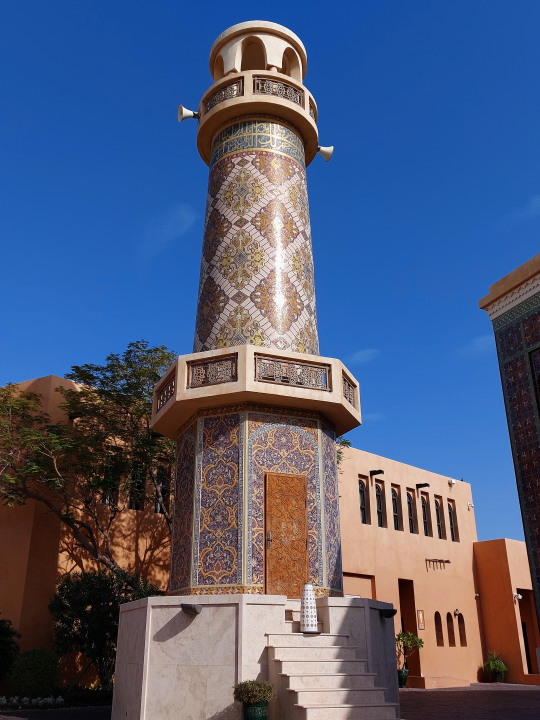
All’arrivo siamo stati accolti dalla guida per un interessante approfondimento sui momenti di preghiera.
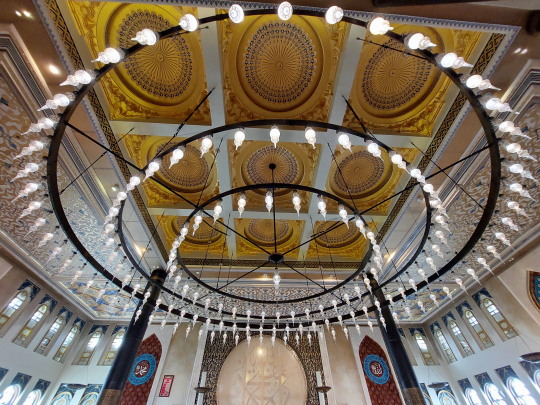
Vi è anche un’altra moschea a Katara che però abbiamo visto solo esternamente perché l’accesso non è consentito ai non musulmani, la cosiddetta Gold Mosque, così chiamata perché è interamente ricoperta da piastrelle dorate.
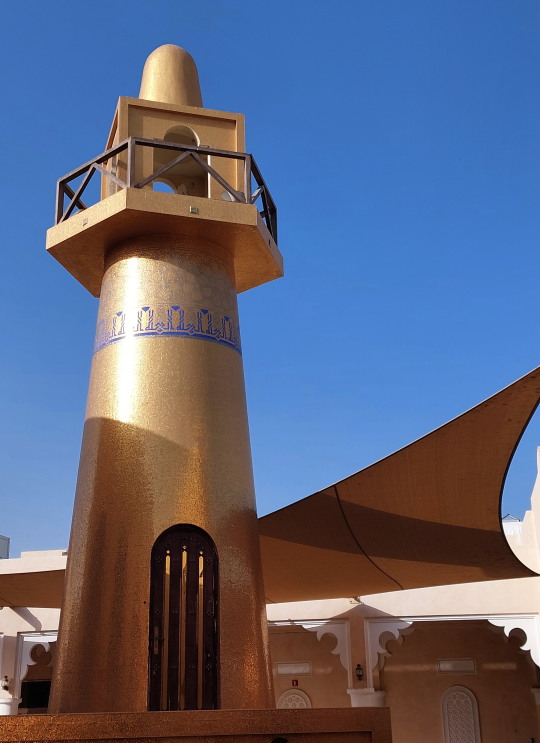
Abbiamo visto anche delle strane costruzioni, strutture oblunghe con fori e trespoli: si tratta delle Pigeon towers dedicate ai piccioni che servivano per raccogliere i loro escrementi utilizzati poi come fertilizzanti. Curiosa anche la forma dell’edificio dove ha sede Al-Gannas Qatari Society, un’associazione culturale che promuove la tradizionale caccia araba e la falconeria: infatti rappresenta uno chaperon, il copricapo per gli uccelli rapaci.
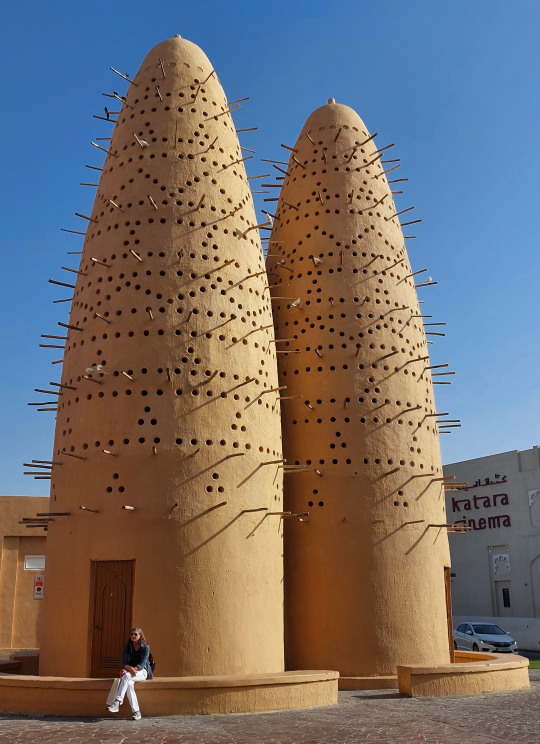
Nel cuore del villaggio si trova il grandioso e bianchissimo Anfiteatro, un mix tra arte islamica e greca,che può ospitare fino a 5 mila spettatori.
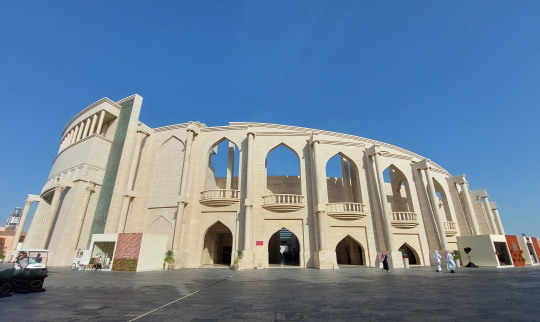
Anche se non volevamo fare shopping abbiamo raggiunto la 21 High Street, la via super lussuosa dove si trova il grande magazzino Lafayette, per ammirare le stupende sculture all’aperto in vetro di murano e poi siamo entrati al SNAN Food Hall per sbirciare la copertura in stile liberty.


Non mancano poi le sculture, ad esempio “The Force of Nature II” di Lorenzo Quinn oppure la fontana in movimento nella piazza principale.


Infine, per la mia gioia, la street art è arrivata anche qui.
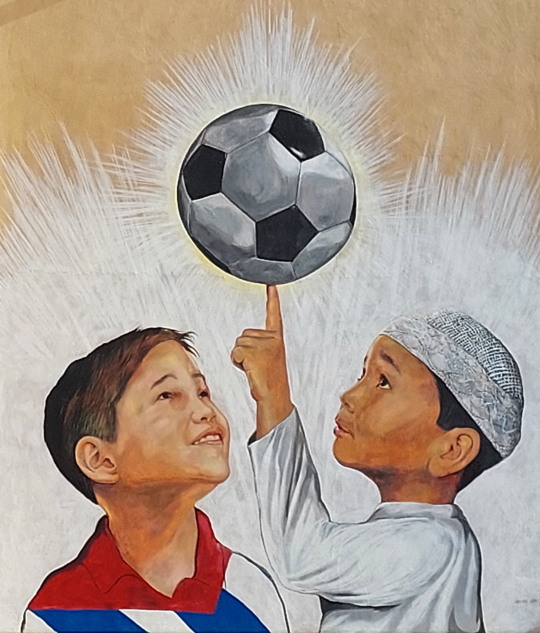
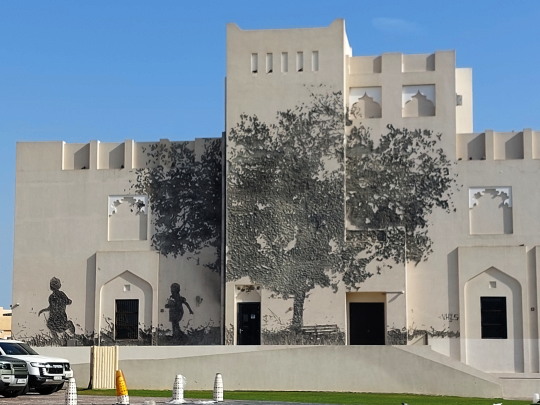


#viaggi#katara#katara cultural village#moschea#moschea di katara#moschea blu#gold mosque#pigeon tower#anfiteatro#21 high street#sculture#lorenzo quinn#street art#qatar
4 notes
·
View notes
Link
Ravz Kustmz Apparel
#street style#creator#creative#asymmetrical#skater#colors#trending#pop culture#pattern#high fashion#fashion#black fashion#black entrepreneurship#nickelodeon#vintage 90s#80s fashion
2 notes
·
View notes
Text
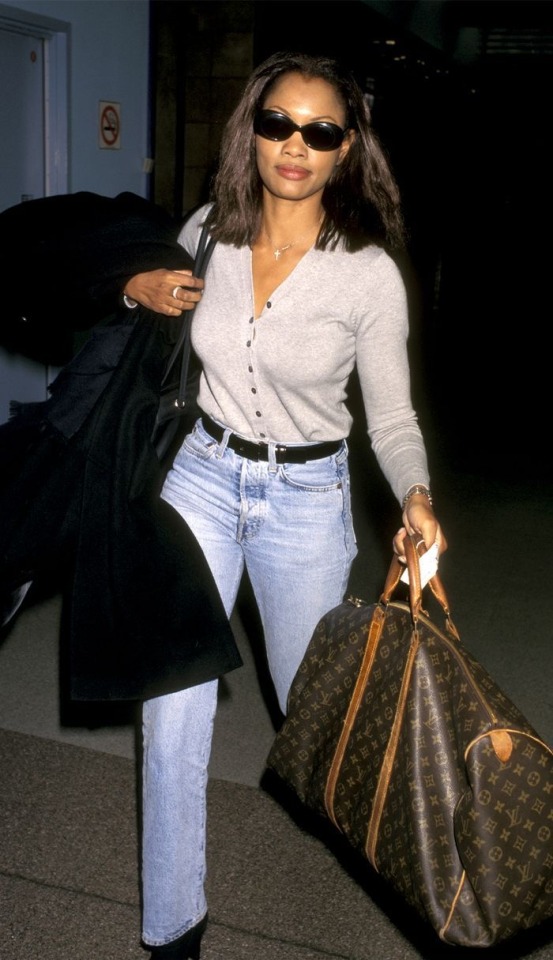
How To Do Autumn Weekends. ((Starring (90s Garcelle Beauvais)). #Societythings
#darling#darling bonnie land#darling bonnie#darling society#high class hip hop#high street culture#art#culture#style#garcelle beauvais#1990s#1990s style#1990s fashion#fashion#street style#beauty#lifestyle#lifestyle blog#music#music blog#chic#glamour#societythings
42 notes
·
View notes
Text
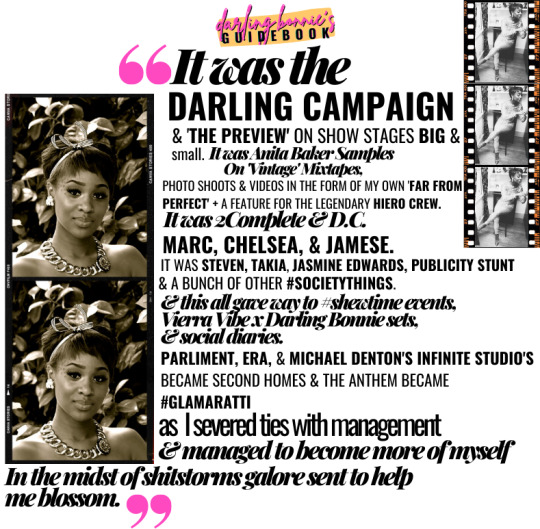
The Campaign That Sparked The Fire.
When it all began it was 'The Darling Campaign', it was the spark that led to the fire that is breeding greater things. For this I am forever thankful.
Darling Bonnie's Guidebook No. 00 'Previously In Darling Bonnie Land'.
X,
DB
#darling#darling bonnie#darling society#darling bonnie land#high class hip hop#high street culture#art#culture#style#beauty#lifestyle#lifestyle blog#music#music blog#artist#creative#women artist#women in music#women empowerment#chic#glamour#societythings
2 notes
·
View notes
Text
We had one of Steff's comedian friends staying with us on the weekend, lovely lad called Sam from Singapore. He had never been to Wales before, and he requested that we take him to a Welsh restaurant so he could try Welsh food
That's surprisingly difficult, actually. Like a lot of Welsh culture, our culinary traditions have not exactly been applauded over the years, so you don't really see them. But a lucky Google search revealed a brand new one has just opened in SA1 called the Welsh House, so great! Away we went.
Fuck me, they went all in.
It wasn't just the menu (though fuck me, what a menu - one of their 'for the table to share' options was little mini leek and cheddar Welsh cakes with salted butter and they were paralysingly good). It wasn't just that every alcohol was Welsh, even including the wine (surprisingly good btw, called 'Naturiol'.)
The table centerpieces were daffodils. All signs for the toilets were Welsh only. The walls had photos of Wales, modern and historical; the windows had the fleur de lis; the specials board (pork belly in Welsh cider and damson sauce with honey and wild garlic glazed carrots) had dragons on. I realise this is probably normal for country-themed restaurants, but I've never been to one for Wales before.
But the best bit, see, was the music
I clocked, when we walked in, that they were playing If You Tolerate This Then Your Children Will Be Next by the Manic Street Preachers (you always clock the Manics). Ah, I thought. A Welsh song! In a Welsh restaurant! Ho ho ho.
As they seated us, it became What's New Pussycat. Ah! I thought. Another Welsh song! Fu fu fu.
Then they played Monster by the Automatic and I was like my god are they only playing Welsh music?? That's so cool! What an eclectic mix that's going to be. We should suggest to them they should look into Welsh language music too, really mix it up.
And then they played Anrheoli by Yws Gwynedd and lads, Steff and I lost our shit. We lost our fucking shit. Sam's sitting there, utterly bewildered. The staff are nervously edging away from us. We don't care. It's the first time I have ever heard a Welsh language song played outside of a Welsh language setting. We're so excited.
"They're playing Welsh music!!!" says Steff. "Holy shit!!!"
"Imagine if they played Sebona Fi!" I say, humorously.
"Nah," says Steff. "You can't in a restaurant. There'd be a riot, it's faerie music."
"...what?" says Sam
We explain the cultural phenomenon that is Sebona Fi. The song changes: Primadonna Girl, by Marina and the Diamonds.
"She's Welsh??" says Sam.
"She's from Abergavenny!" we beam.
"I don't know what that means," nods Sam, who is from Singapore.
Next: The Bartender and the Thief, by the Stereophonics. We're in high spirits. The extraordinarily Welsh wine arrives, as does the rarebit on sourdough starter. Sam, a gay man, delightedly orders the faggots and peas.
They play Ben Rhys by Gwilym Bowen Rhys, and we lose our shit again. Sam is now used to this, because comedians are adaptable. "They even have daffodils!" I say, misty eyed. "Is that relevant?" Sam asks, fascinated.
They play Hiraeth, by PLU. Hard to explain that one. Very hard to explain the effect it has when it's played in a restaurant, but Sam looks around the suddenly muted room and whispers "Are we in church?"
"It's about Hiraeth," whispers Steff. "So kind of."
Next: the Masses Against the Classes, by the Manics. Utter tonal whiplash. This playlist is not remotely restaurant appropriate. It's perfect.
"You'd think they'd pick like... a genre," Sam says dreamily. "We just went from church to the barricades."
The faggots arrive. "I forgot it would be a western sized portion," Sam says morosely, of what to me is a normal sized plate of food. He tries one, and brightens.
They play Sebona Fi.
The place erupts.
#I am going back there#going to try the rarebit next time#and the popcorn cockles#WALES!#closed for cleaning on mondays
16K notes
·
View notes
Text
This may be an urban legend and I will preface this by saying that I don't even remember where I heard it, but going to bigger cities in Finland always reminds me of it nonetheless, so I'm telling you now.
There was a student group from either China or Korea - I can't recall which one, but Asian nonetheless - who were in student exchange to Finland, in Helsinki. The finnish hosts did their best to make them feel welcome, touring them around the city on the first day out and about, but they noticed the asian students seeming uneased by something. Not in a way of just being timid about being in a foreign country, but glancing at each other like something was off, and looking at each other with this air of "you're seeing it too, right?" but none of them wanted to be the first to bring it up to their finnish hosts. Both cultures are the high-context type, so they had clearly concluded that since the finns didn't point out the obvious unpromptedly, the subject might be too sensitive to talk about.
Eventually one of the exchange students decided to brave against this potential taboo, and delicately asked: "has something... Happened here?" And there was mutual surprise when the finns had no clue what they were talking about. This was pre-covid, nothing bad had happened there. And one of the exchange students - who still weren't sure whether they're breaching a taboo of something One Does Not Talk About - bravely elaborated. The streets are empty. It's eerie. They're in the central of the capital city and the streets are almost deserted. Has there been some calamity? A plague, an earthquake, have the people fled or been evacuated somewhere? Is it safe to even be here?
And they were just as baffled when the finnish hosts confirmed that no, this is a normal amount of people to see on the street on a normal day. Finland just looks like this. And for the sake of clarity, this is what Helsinki city centre looks like on a normal saturday morning at 10 am:
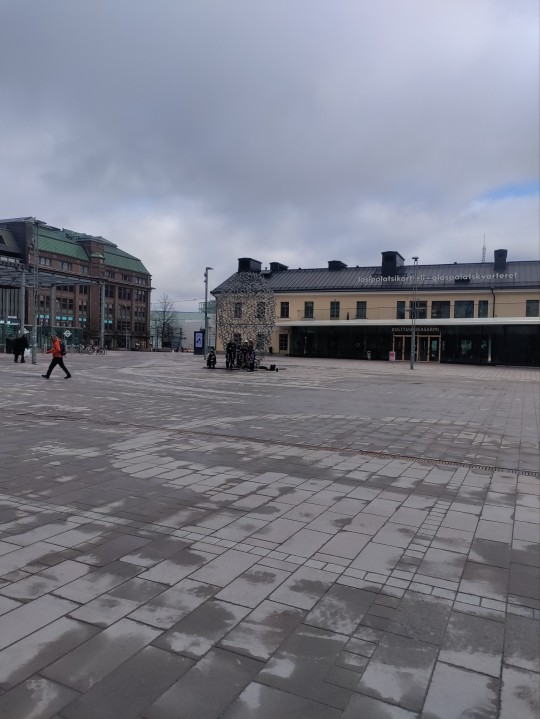
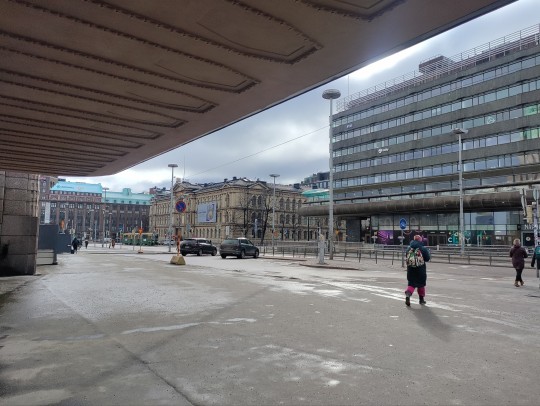
Both pictures taken by me, this morning.
5K notes
·
View notes
Text
In contrast with professional drag queens, who were only playing at being women onstage, [Esther] Newton learned that the very bottom of the gay social hierarchy was the province of street queens. In almost total contrast to professional queens, street queens were "the underclass of the gay world." Although they embraced effeminacy, too, they did so in the wrong place and for the wrong reason: in public and outside of professional work. As a result, Newton explained, the street queens "are never off stage. Their way of life is collective, illegal, and immediate." Because they didn't get paid to be feminine and were locked out of even the most menial of nightlife jobs, Newton observed that their lives were perceived to revolve around "confrontation, prostitution, and drug 'highs'." Even in a gay underworld where everyone was marked as deviant, it was the sincere street queens who tried to live as women who were punished most for what was celebrated-and paid-as an act onstage. When stage queens lost their jobs, they were often socially excluded like trans women. Newton explained that when she returned to Kansas City one night during her fieldwork, she learned that two poor queens she had met had recently lost their jobs as impersonators. Since then, they had become "indistinguishable from street fairies," growing out their hair long and wearing makeup in public-even "passing" as girls in certain situations," in addition to earning a reputation for taking pills. They were now treated harshly by everyone in the local scene. Most people wouldn't even speak to them in public. Professional drag queens who didn't live as women still had to avoid being seen as too "transy" in their style and demeanor. One professional queen that Newton interviewed explained why: it was dangerous to be transy because it reinforced the stigma of effeminacy without the safety of being onstage. "I think what you do in your bed is your business," he told Newton, echoing a middle-class understanding of gay privacy, "[but] what you do on the street is everybody's business."
The first street queen who appears in Mother Camp is named Lola, a young Black trans girl who is "becoming a woman,' as they say'." Newton met Lola at her dingy Kansas City apartment, where she lived with Tiger, a young gay man, and Godiva, a somewhat more respectable queen. What made Godiva more respectable than Lola wasn't just a lack of hormonal transition. It was that Godiva could work as a female impersonator because she wasn't trying to sincerely live as a woman. Lola, on the other hand, was permanently out of work because being Black and trans made her unhireable, including in female impersonation. When Newton entered their apartment, which had virtually no furniture, she found Lola lying on "a rumpled-up mattress on the floor" and entertaining three "very rough-looking young men." These kinds of apartments, wrote Newton, "are not 'homes.' They are places to come in off the street." The extremely poor trans women who lived as street queens, like Lola, "literally live outside the law," Newton explained. Violence and assault were their everyday experiences, drugs were omnipresent, and sex work was about the only work they could do. Even if they didn't have "homes," street queens "do live in the police system."
As a result of being policed and ostracized by their own gay peers, Newton felt that street queens were "dedicated to "staying out of it" as a way of life. "From their perspective, all of respectable society seems square, distant, and hypocritical. From their 'place' at the very bottom of the moral and status structure, they are in a strategic position to experience the numerous discrepancies between the ideals of American culture and the realities." Yet, however withdrawn or strung out they were perceived to be, the street queens were hardly afraid to act. On the contrary, they were regarded by many as the bravest and most combative in the gay world. In the summer of 1966, street queens in San Francisco fought back at Compton's Cafeteria, an all-night venue popular with sex workers and other poor gay people. After management had called the police on a table that was hanging out for hours ordering nothing but coffee, an officer grabbed the arm of one street queen. As the historian Susan Stryker recounts, that queen threw her coffee in the police officer's face, "and a melee erupted." As the queens led the patrons in throwing everything on their tables at the cops-who called for backup-a full-blown riot erupted onto the street. The queens beat the police with their purses "and kicked them with their high-heeled shoes." A similar incident was documented in 1959, when drag queens fought back against the police at Cooper's Donuts in Los Angeles by throwing donuts-and punches. How many more, unrecorded, times street queens fought back is anyone's guess. The most famous event came in 1969, when street queens led the Stonewall rebellion in New York City. Newton shares in Mother Camp that she wasn't surprised to learn it was the street queens who carried Stonewall. "Street fairies," she wrote, "have nothing to lose."
Jules Gill-Peterson, A Short History of Trans Misogyny
4K notes
·
View notes